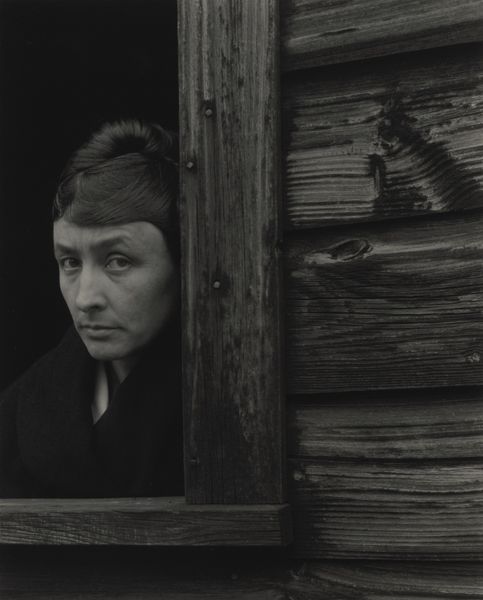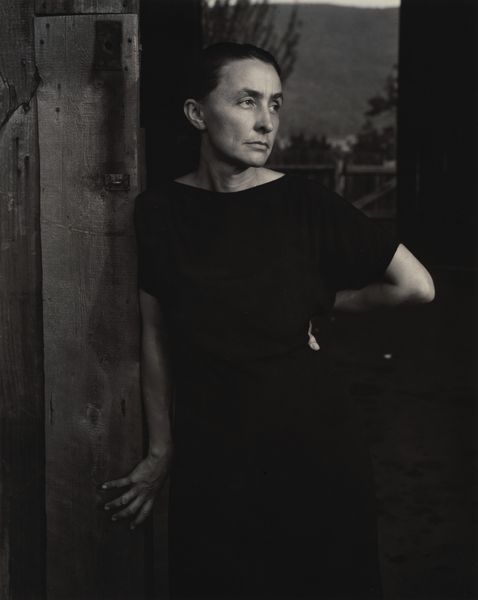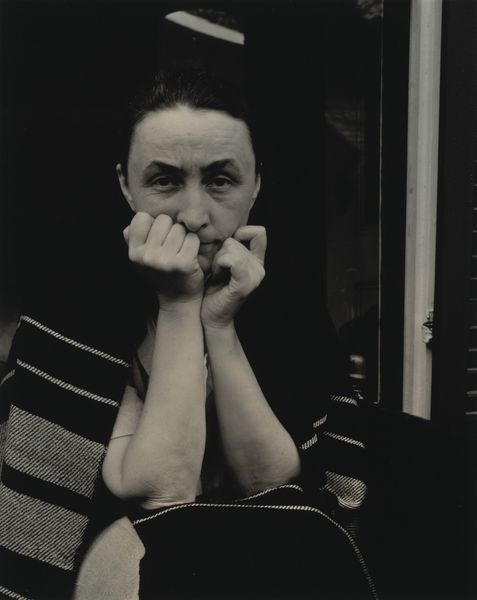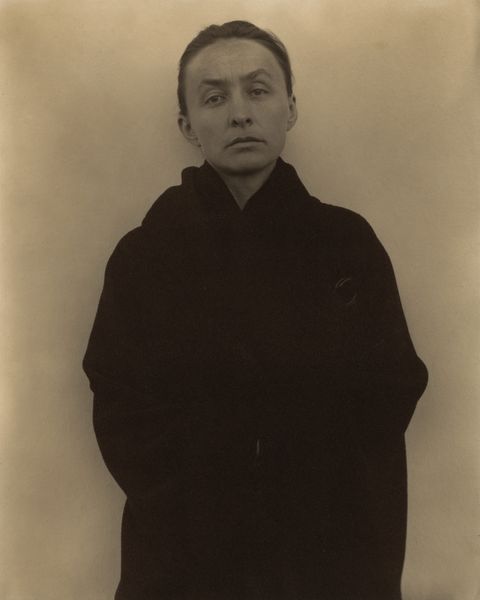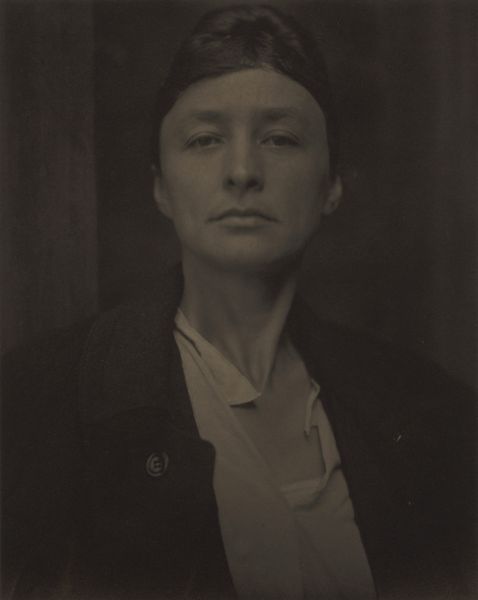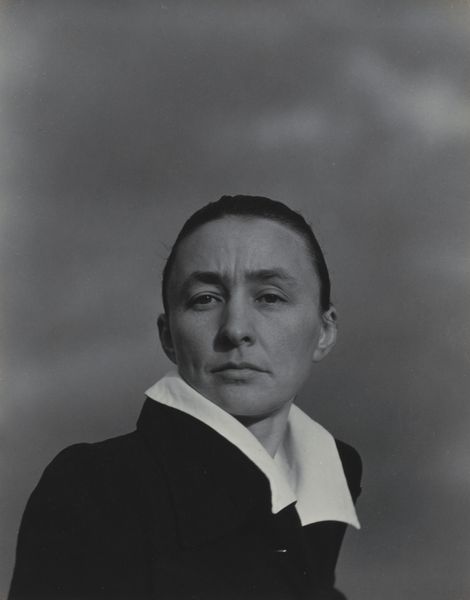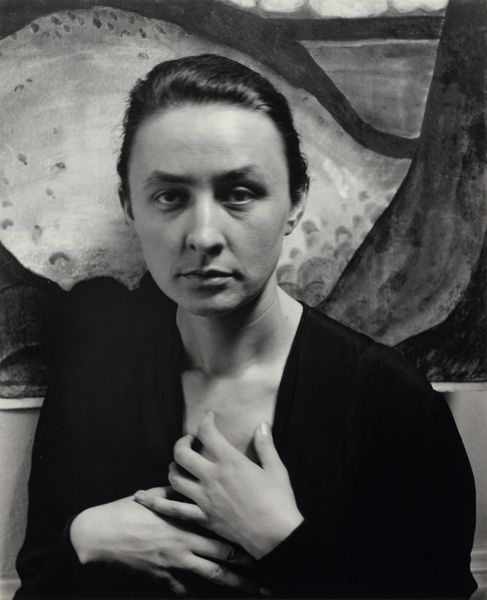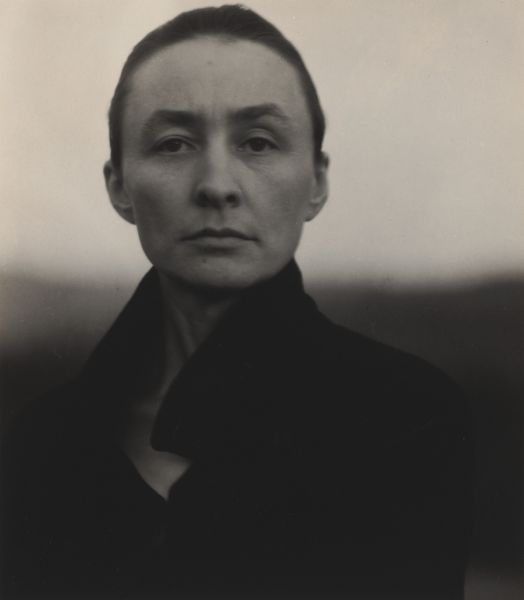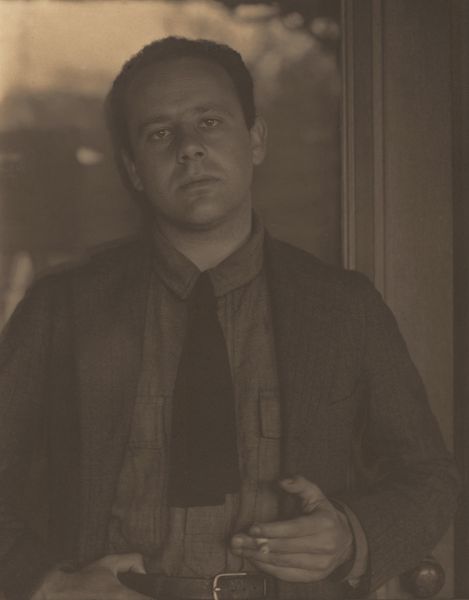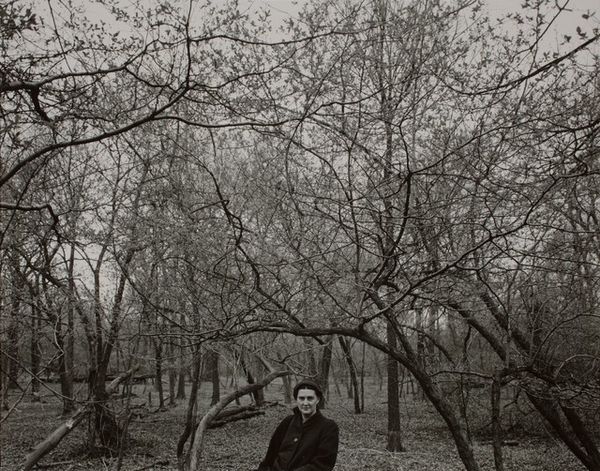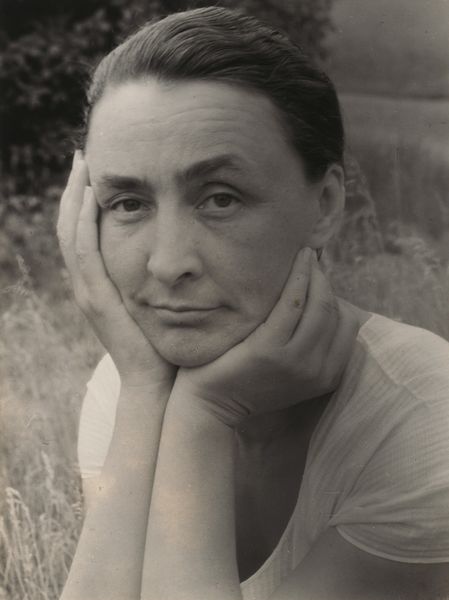
plein-air, photography, gelatin-silver-print
#
portrait
#
black and white photography
#
pictorialism
#
plein-air
#
landscape
#
outdoor photograph
#
photography
#
historical photography
#
black and white
#
gelatin-silver-print
#
monochrome photography
#
modernism
Dimensions: sheet (trimmed to image): 11.5 x 9 cm (4 1/2 x 3 9/16 in.) mount: 34.3 x 27.7 cm (13 1/2 x 10 7/8 in.)
Copyright: National Gallery of Art: CC0 1.0
Editor: This is a gelatin-silver print simply entitled "Georgia O'Keeffe," created by Alfred Stieglitz in 1922. The photograph is dominated by a stark contrast between the figure and the landscape, giving it a rather solemn atmosphere. What formal elements strike you most when you examine this work? Curator: The interplay of light and shadow is immediately apparent. Note how Stieglitz uses tonal variation, primarily with chiaroscuro, to sculpt O’Keeffe’s face, drawing our eye to her gaze. The texture achieved with the gelatin-silver printmaking creates a grainy and raw feel, typical of pictorialism in its move toward modernism. Consider also the framing; O’Keeffe isn’t centered. What does the asymmetrical composition suggest? Editor: It's interesting that you bring up asymmetry! It feels almost casual, like a candid shot. Do you think that feeling contributes to the impact of the work? Curator: Precisely! The off-kilter composition generates visual tension, challenging traditional portrait conventions. Moreover, it forces the viewer to consider the negative space – the darker backdrop of the forest – which becomes equally important to understanding the picture. The placement underscores O’Keeffe’s figure against nature. The canvas positioned at the bottom, an important detail, appears both literally and figuratively grounded. It suggests that painting and being are equally inseparable. Editor: I hadn't considered that! Analyzing the composition like that really changes my perspective on the artwork. Thanks for sharing your insights! Curator: Indeed, exploring these elements gives us a glimpse into how Stieglitz visualized and venerated O'Keeffe as both an artist and a subject. Looking closer at the formal construction enhances the depth and meaning, even in its subtle, near monochrome tonalities.
Comments
No comments
Be the first to comment and join the conversation on the ultimate creative platform.

